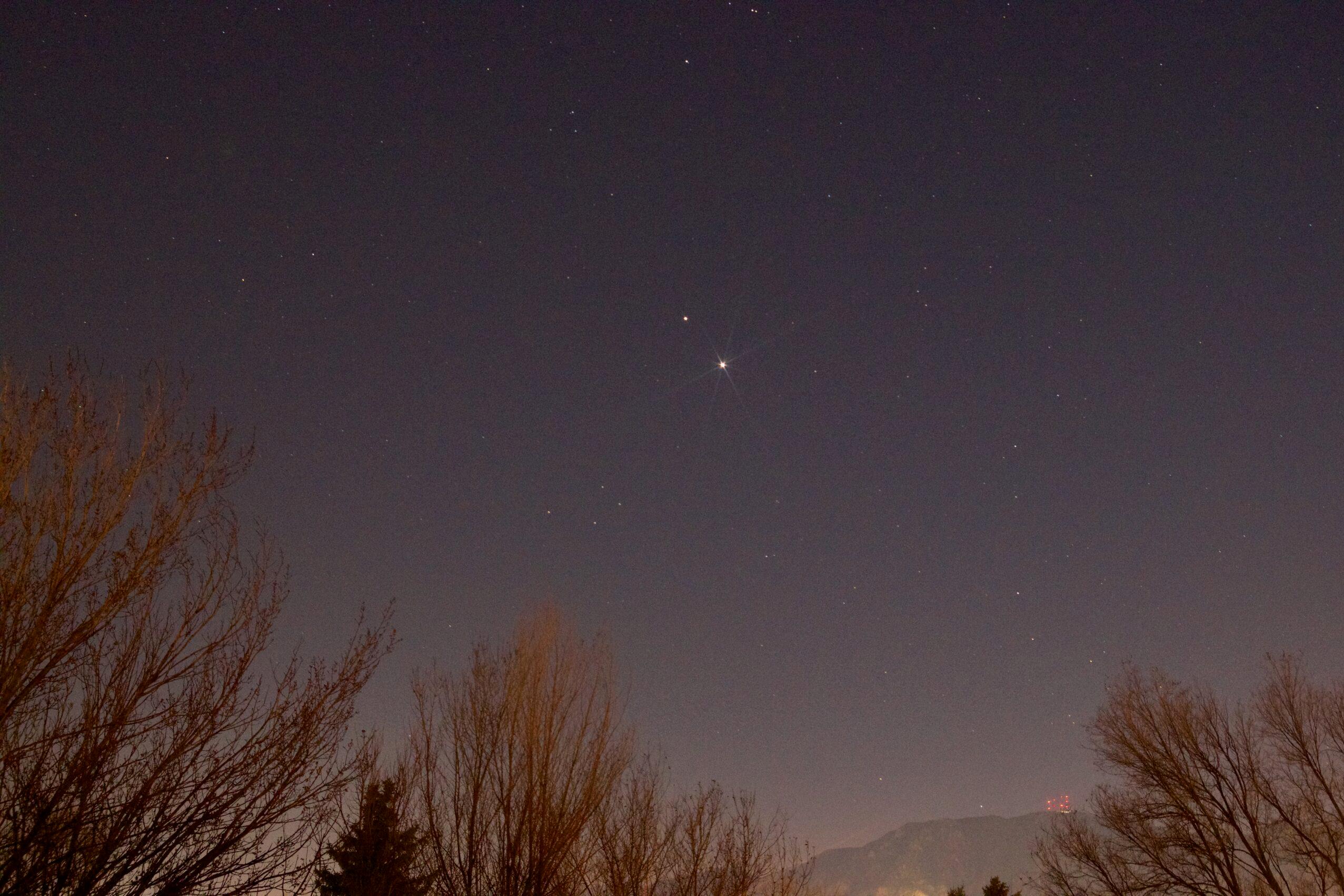
A rare celestial event will help mark the Winter Solstice in the northern hemisphere on Monday, Dec. 21.
Jupiter and Saturn are currently appearing very close together from an earthly vantage point. These two gas giants are in conjunction, an occurrence that happens every 20 years or so.
This one though, is extra special.
“Really, really close conjunctions like this one are quite rare," said Hal Bidlack with the Colorado Springs Astronomical Society. "We haven’t been able to observe Jupiter and Saturn this close since the year 1226. And we won’t see them again this close for decades and decades to come.”
The two planets were last about this close together in the year 1623. But the pairing occurred while the planets were close to the sun from earth's perspective, Bidlack said, and the sight was basically washed out in the sun’s glare.
In reality, Saturn and Jupiter are hundreds of millions of miles apart.
“On the 21st they will appear so close that if you held a dime on edge at arm's length, that’s how close they would be together,” Bidlack said.
From Colorado Springs, sky gazers only need to look toward Cheyenne Mountain to catch a glimpse. Elsewhere in Colorado, Bidlack said folks can look to the southwestern skies, low near the horizon.
The pair sets around an hour and a half after the sun does, about 4:39 p.m. on Monday.
The planets will begin to separate when viewed from Earth, and will eventually disappear altogether from the night sky until reappearing in the morning sky in early 2021. See more skywatching tips from NASA.









